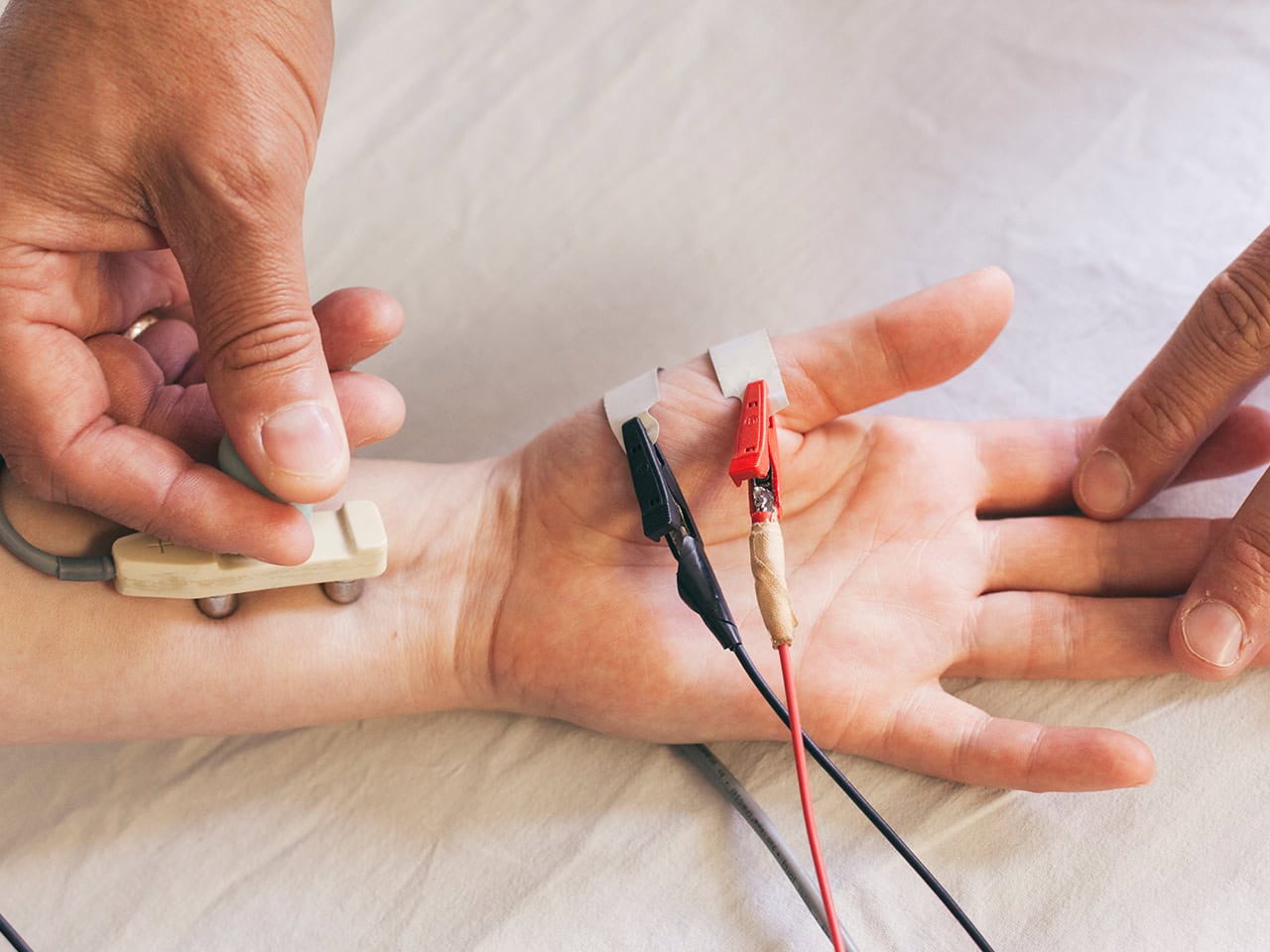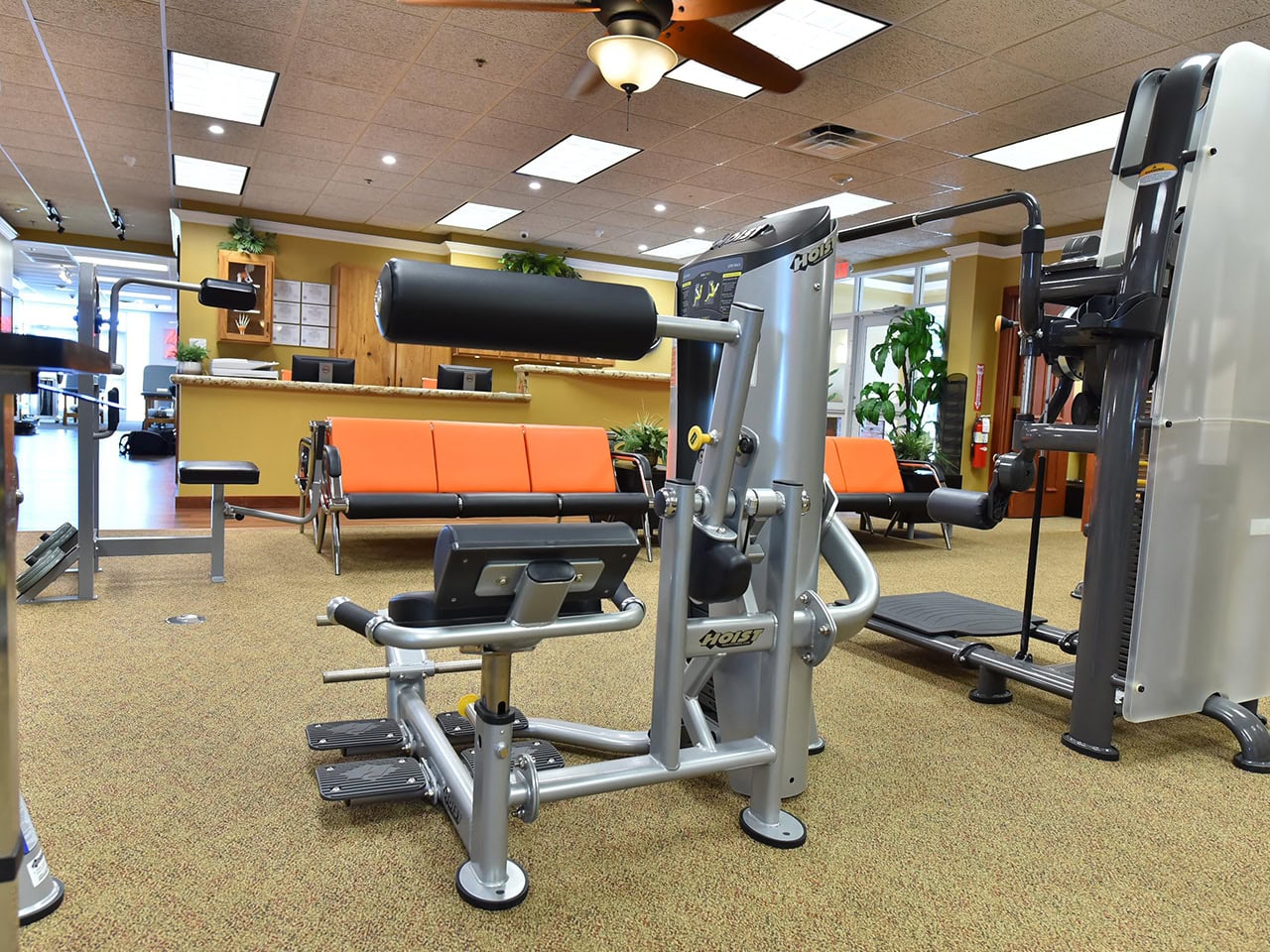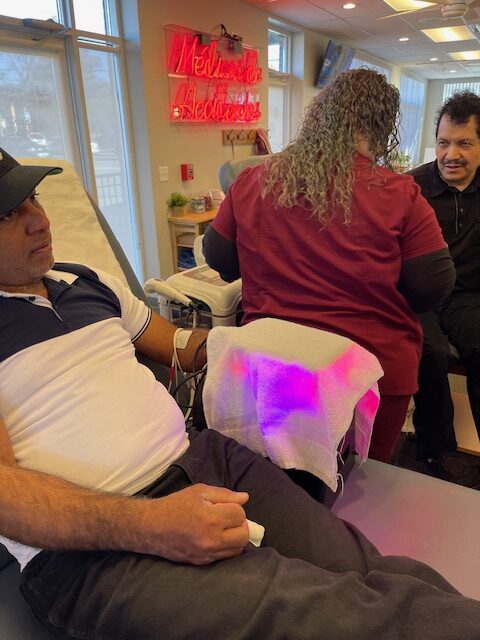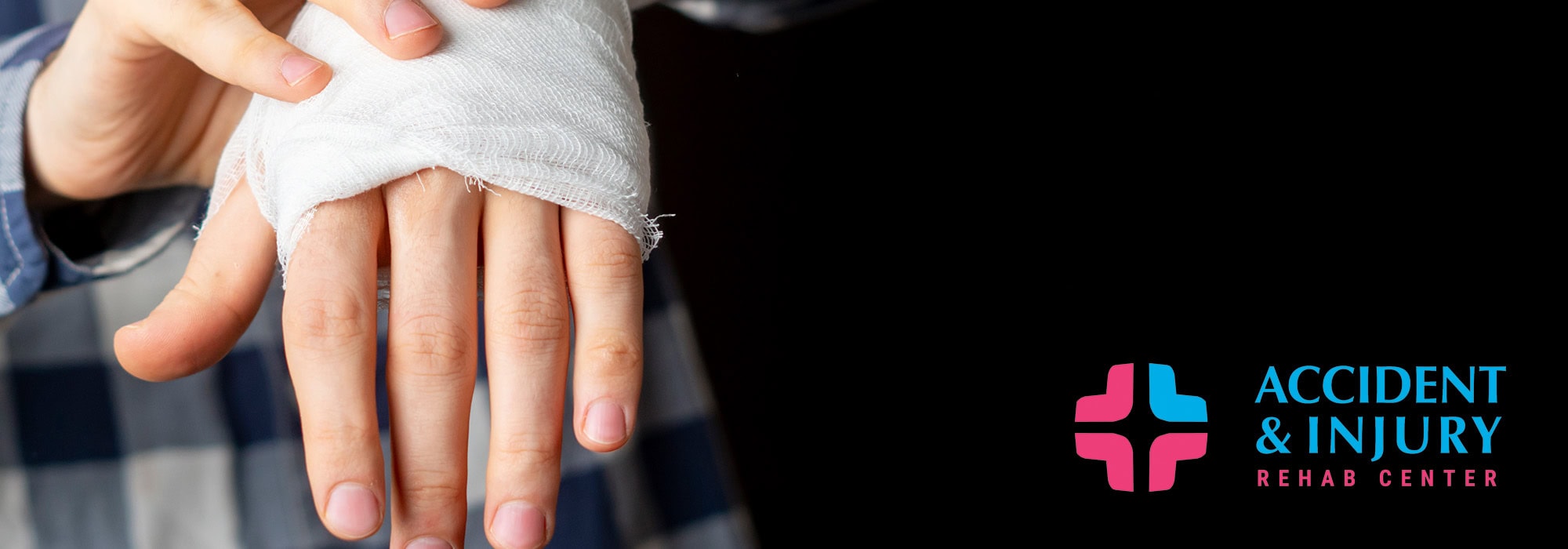
Our hands are incredibly versatile tools we rely on daily for various tasks, from writing and typing to cooking, playing musical instruments, and performing simple daily activities. Because we use our hands in many ways, they are also highly susceptible to injury. Understanding the various types of hand injuries, recognizing the symptoms, and knowing how to treat and prevent these injuries are crucial for maintaining the optimal function of your hands and fingers.
At Accident and Injury Rehab Center, we provide comprehensive care for all types of hand injuries. Our team is committed to helping you recover fully and return to your daily activities as quickly and safely as possible.
Hand fractures are one of the most common types of injuries and occur when a bone in the hand breaks. A direct impact, a fall onto an outstretched hand, or trauma from an accident can cause fractures. The severity of a hand fracture can vary significantly, ranging from a simple crack to a complete break. The bones commonly affected in hand fractures include the scaphoid (near the wrist) or phalanges (fingers). Symptoms of a fracture include severe pain, swelling, bruising, and difficulty moving the hand or fingers. Early intervention is key to ensure proper diagnosis and treatment, such as immobilization or, in severe cases, surgical intervention.
A sprain occurs when the ligaments in the hand, the strong bands of tissue connecting bones, are overstretched or torn. This injury typically occurs during a sudden twist, fall, or awkward motion. Sprains often result in pain, swelling, bruising, and a reduced range of motion. Mild sprains can usually be managed with rest, ice, and elevation, while more severe sprains may require additional medical care or physical therapy to restore function.
Although not an acute injury like a fracture or sprain, Carpal Tunnel Syndrome is a common hand condition caused by long-term pressure on the median nerve, which runs through the wrist’s carpal tunnel. It typically develops from repetitive activities like typing or using a mouse. Symptoms include numbness, tingling, and weakness in the thumb and fingers. Early treatment options include wrist splints, medications, and rest. If conservative treatments fail, surgery may be necessary in more advanced cases.





Proper diagnosis is essential for effective treatment of hand injuries. A physical examination by a healthcare provider will help determine the extent of the injury. Depending on the extent of the hand injury, the provider may run diagnostic tests such as:
These tests detect fractures, soft tissue damage, and other underlying conditions. If you experience severe pain, deformity, or difficulty using your hand, prompt medical attention is necessary to avoid complications and ensure proper healing.
Treating a broken finger or other fractures involves immobilizing the injured area with a splint or cast to keep the bones in place during the healing process. For more complex fractures, surgery may be required to realign and secure the bones with pins, screws, or plates. Post-surgical rehabilitation and physical therapy are often recommended to restore the injured hand's strength, mobility, and function.
A typical treatment plan for mild hand sprains includes rest, ice, compression, and elevation (R.I.C.E.) to reduce swelling and alleviate pain. Physical therapy may be recommended in more severe cases to regain mobility, strength, and flexibility. Using hand braces or wraps during the healing process may also aid recovery by supporting the injured ligaments.
If you have carpal tunnel syndrome, treatment options depend on the severity of the condition. Initially, wrist splints, anti-inflammatory medications, and modifications to daily activities may help alleviate symptoms. If your condition does not improve with conservative measures, surgical intervention may be necessary to relieve pressure on the median nerve.
Hand surgery may be required for more complex injuries, such as severe fractures, tendon injuries, or chronic conditions like carpal tunnel syndrome. Our network of medical professionals will carefully assess the situation and determine whether surgery is the best option based on the injury's severity, overall health, and activity level. Surgical procedures can help realign bones, repair damaged tendons, and alleviate nerve compression to improve hand function.
With over 5 decades of collective experience, our staff brings a wealth of wisdom and insight to your injury treatment and medical documentation that supports your legal claim. Our experience and caring approach allows us to provide thorough treatment to address your injuries and get you on the road to recovery.
Double Board Certified Chiropractic Neurologist and Chiropractic Internist
Doctor of Physical Therapy
Chiropractic and Radiological Technician
Hand injuries are common, but proactive measures can significantly reduce the risk of damage and ensure your hands remain healthy and functional. Whether involved in high- or low-impact activities, like performing manual labor or working long hours at a desk, incorporating preventive strategies into your daily routine is essential for minimizing the risk of hand injuries.
Falls, accidents, or direct impacts often cause hand fractures. Protective gear is crucial to prevent these types of injuries, especially during activities that involve a risk of falls or collisions. In construction or manual labor jobs, proper safety equipment like heavy-duty gloves or wrist supports can protect against injury from falling objects or repetitive motions.
In addition to protective gear, strengthening exercises for the forearm, wrist, and fingers can significantly reduce the risk of fractures. Regular exercises focusing on wrist stability and forearm strength can help you maintain better control and reduce the chances of injury.
Activities like wrist curls with light weights, forearm rotations, and grip strengthening with stress balls can strengthen the muscles around the hand and wrist, providing added support and protection when performing tasks that stress these areas.
Sprains and strains are a typical hand injury, often caused by sudden movements, awkward motions, or repetitive use. These types of injuries can be minimized by focusing on proper hand and wrist posture, especially during tasks that involve repetitive motions, like typing, writing, or using a mouse for extended periods. Ergonomically designed workstations and tools are vital for maintaining good posture and preventing overuse injuries. Consider adjusting the height of your chair to the position of your keyboard or using an ergonomic mouse to help keep your wrist in a neutral position and reduce the strain on your muscles and ligaments.
In addition to proper posture, taking regular breaks throughout the day is essential, especially if you're performing repetitive tasks. Short breaks allow your muscles and ligaments to relax and recover, reducing the risk of overuse injuries. Stretching exercises designed for the hand, wrist, and fingers can also help alleviate tension and improve flexibility, making the tissues more resilient to strain. Simple stretches, such as gently bending and extending the fingers or rotating the wrists, can help maintain mobility and prevent tightness.
Strengthening exercises are also key in preventing sprains and strains. Incorporating exercises such as grip strengthening with a stress ball, wrist curls, and finger extensions with resistance bands can build strength in the hand and wrist, making them more resistant to injury. These exercises help improve muscle tone, enhance flexibility, and promote better coordination, which can be essential for avoiding accidents and strains during daily activities.
By following these preventive measures, you can reduce the likelihood of hand injuries, safeguard the health of your hands, and maintain optimal function for years to come. At Accident and Injury Rehab Center, we are dedicated to helping you take proactive steps to prevent hand injuries and ensure long-term health. If you need personalized guidance or are experiencing discomfort, schedule an appointment and learn about care strategies tailored to your lifestyle.

While most hand injuries heal with the proper care, some can lead to chronic pain or complications if left untreated. Injuries such as tendonitis, nerve damage from carpal tunnel syndrome, or improperly healed fractures can cause ongoing discomfort and functional limitations. Early diagnosis and treatment are critical for preventing these long-term issues and preserving the full function of your hands.
Rehabilitation therapy can be invaluable for those dealing with stiffness, reduced mobility, or pain after an injury. A customized rehabilitation program, including physical therapy exercises, can help restore strength, flexibility, and range of motion, ensuring the hand regains its full potential.
Accident and Injury Rehab Center offers comprehensive care for individuals suffering from hand injuries. Whether you've experienced a sudden accident, sports-related injury, or a repetitive strain condition, our dedicated team of healthcare professionals is here to guide you through every step of your recovery journey. From the initial diagnosis to advanced treatment options and rehabilitation, we tailor our care to meet your unique needs, ensuring you achieve optimal healing and regain full functionality.
Our team is equipped with the latest diagnostic tools and treatment techniques, ensuring that each injury, no matter how complex, is managed with the utmost attention to detail. We understand that hand injuries can significantly impact life, and we are committed to getting you back to doing the things you love, whether typing at work, playing sports, or engaging in hobbies.
Accident and Injury Rehab Center's recovery process involves addressing the injury itself and providing ongoing support to help prevent future injuries and maintain hand health. Our rehabilitation programs are designed to strengthen the muscles, improve mobility, and restore proper function to the injured hand, all while ensuring the process is as smooth and pain-free as possible.
If you or someone you know has sustained a hand injury, we encourage you to contact us today. You’ll take the first step toward a full recovery by scheduling a consultation with our experts. We are here to provide personalized care and develop a treatment plan that helps you return to your daily activities with confidence. Don’t let a hand injury hold you back—contact Accident and Injury Rehab Center today, and let us support you in your journey to recovery.
